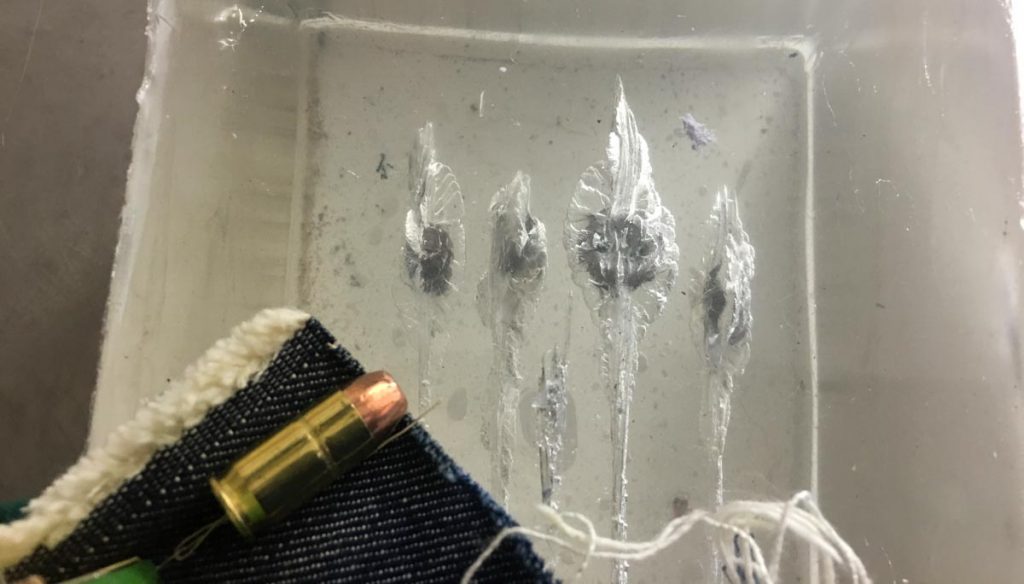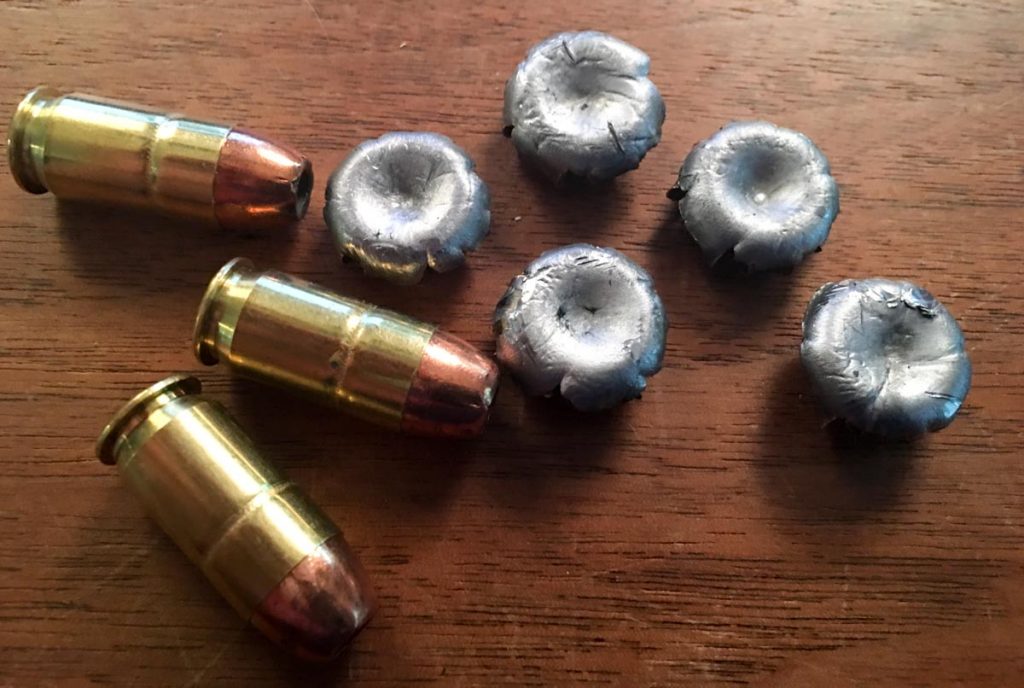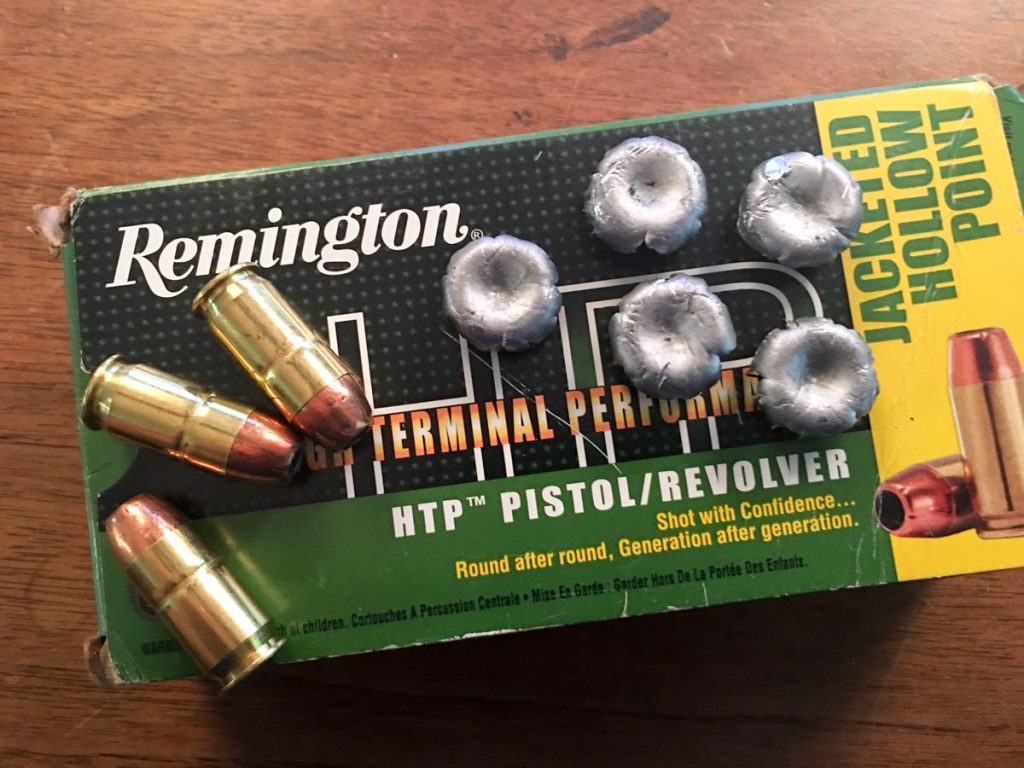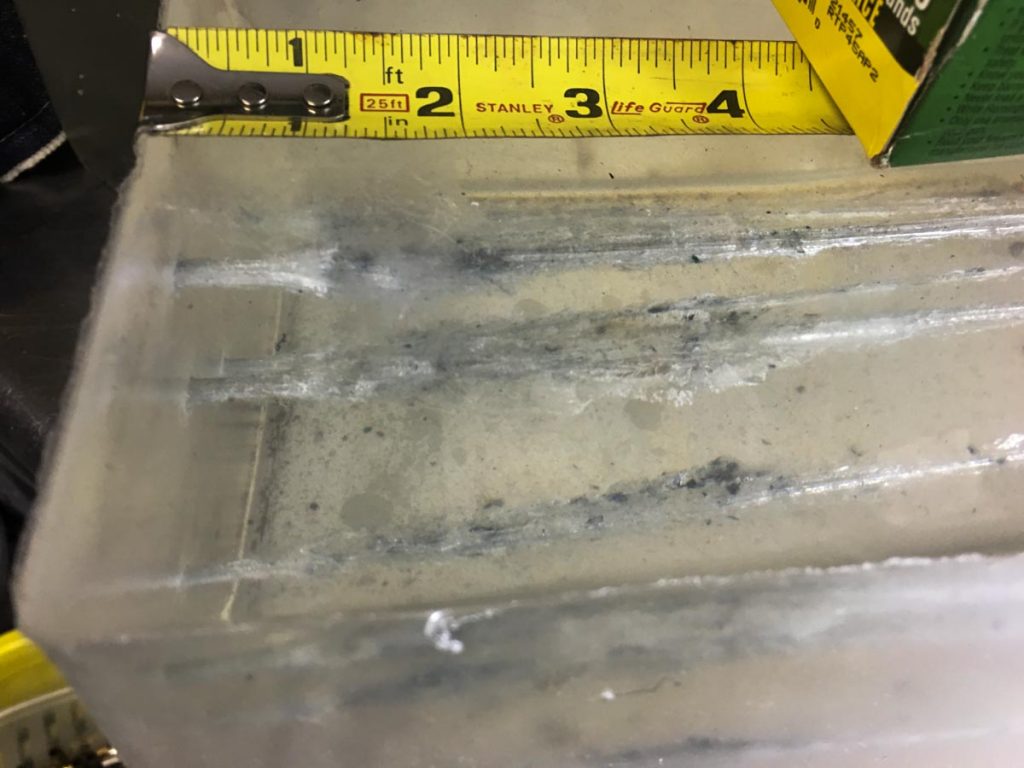To learn more, visit https://www.remington.com/ammunition/handgun/high-terminal-performance-htp.
Premium defensive ammunition is crazy expensive. However, I suppose if you ever have to use it for its intended purpose, it’s worth every penny.
While most premium self-defense ammo will cost you over a buck per round, Remington’s HTP line appeals to the more budget conscious crowd. Packed in boxes of 50, it sells for about the same as most self-defense ammo packaged in boxes of 20. Doing the fancy math indicates that it’s a little less than half the cost of the most expensive stuff.
While most people really don’t need large quantities of premium ammo because they practice with cost-effective full metal jacket loads, then replace rounds in the magazine with premium cartridges, it can be a good thing to have easy access to reasonably priced carry ammunition. If you get a new gun, you’ll want to be really sure that your chosen carry ammo works reliably, and that means you’ll need to shoot a lot of it through your handgun, perhaps hundreds of rounds. This is one scenario where budget defensive ammo shines. You can practice (at least in moderation) with the same ammo you carry.
Let’s take a look at the Remington HTP .45 ACP 185-grain load to see how it performs.
The “HTP” stands for “High Terminal Performance” which doesn’t necessarily reflect any specific design feature. This ammo uses a jacketed hollow point bullet design. The bullet cavity is relatively small as far as .45 ACP hollow points go, with the opening measuring about .18 inches wide. You’ll notice small cuts, almost nicks, at the edge of the copper jacket to aid the expansion process. The bullet itself weighs 185 grains, and the cartridge uses a Remington 2 ½ primer. The cases are plain brass, not nickel-plated, and I assume this is one of the cost-saving design features. The factory muzzle velocity rating is an even 1,000 feet per second which yields a muzzle velocity of 411 foot-pounds.
Velocity
To find “real world” velocity from a variety of guns, I set up a Shooting Chrony Beta Master Chronograph 15 yards down range and recorded strings of fire to obtain average velocity readings.
| Gun | Average Velocity (feet per second) |
| Smith & Wesson M&P45 Threaded with AAC TiRant Suppressor | 1,072.7 |
| Smith & Wesson SW1911 E-Series (5” barrel) | 1,043.3 |
| Smith & Wesson SW1911 Pro Series (3” barrel) | 872.3 |
| Smith & Wesson SW1911 Sc (4.25” barrel) | 956.6 |
| Springfield TRP 1911 (5” barrel) | 1,041.3 |
Even with the lighter end of the scale 185-grain load, everything was comfortably subsonic. Where I shot, the speed of sound was about 1,130 feet per second given current conditions. Even when I shot with a suppressor, which usually boosts velocity a bit, I was still about 50 feet per second below the sound barrier.
The factory rating for velocity is 1,000 feet per second when shooting through a five-inch barrel, so my results exceeded that by about 42 feet per second when shooting from two different 1911 Government model handguns.
I did a little extra velocity measurement and math using the two Government size 1911s – the Smith & Wesson eSeries and the Springfield Armory TRP. Velocity was surprisingly consistent, with an extreme spread of 57 feet per second from the Smith & Wesson and just 15 feet per second from the Springfield Armory TRP. If you’re feeling statistical, that translates to standard deviations of 17.19 and 5.31 respectively.

Velocity was surprisingly consistent, which most likely led to the almost identical penetration results.
Accuracy
To get a handle on accuracy, I set up targets at 25 yards. For the Smith & Wesson SW1911 eSeries and Smith & Wesson M&P45 Threaded pistols, I used the UM Tactical Rail mount which allowed me to mount a handgun optic. I use a Bushnell Elite 3500 scope for handgun accuracy tests because the 2-7x magnification gives me a far more precise sight picture than could ever be achieved with iron sights. As a result, groups are always smaller, and more representative of what a given combination of gun and ammo will do because eyesight errors are taken out of the equation.
I shot some groups from a Springfield Armory XD-S .45 ACP just for fun. Given the smaller sight radius, I shot those groups from 15 yards using the iron sights and a sandbag rest.
| Gun | 5-Shot Group Average, 25 Yards |
| Smith & Wesson SW1911 E-Series | 1.46” |
| Smith & Wesson M&P45 Threaded with AAC TiRant Suppressor | 3.56” |
| Springfield Armory XD-S .45 ACP (15 yards) | 1.17” |
As you can see, the ammo will shoot plenty well enough. I suspect the solid accuracy results are related to the velocity consistency.
Expansion and Penetration
Last, but not least, I broke out the Jello for the fun part. I used gelatin blocks from Clear Ballistics to test expansion and penetration. In front of the block, I placed the FBI standard heavy fabric layers. This material consists of a light denim layer, insulation layer, and two cotton layers. The purpose is to approximate the effects of clothing and jacket. Often, hollow point bullets can “clog” with fabric or other barrier material and fail to expand properly.
I fired five shots into the 16-inch long gelatin block, and, as you can see, all five expanded perfectly. Unlike many defensive rounds, the HTP jacketed hollow points expanded into circular mushroom shapes rather than star petal formations. That’s neither here nor there, just an observation. I measured the expanded bullets and recorded diameters of .77, .72, .74, .76 and .73 inches. If you do the math, you’ll see that average expansion is 1.65 times original diameter. The jackets and lead cores stayed together. Weighing each bullet after digging it out of the gel, I found the lightest to be 184.3 grains, the heaviest right at 185 grains, and the remaining three somewhere in between.
Penetration was nothing if not consistent. Four of the five shots landed between 14.25 and 14.75 inches. The fifth? Umm, I might have angled that one a hair. It came out the top of the gelatin block after about 12.5 inches of travel and plowed into my backstop. Oops.

All shots fired through the FBI heavy fabric and into the gel expanded perfectly to about 1.65 times original diameter.
Closing Arguments
This ammo tested out impressively, especially considering the price. The biggest surprise was the consistency of velocity. That compared to other loads I’ve tested that cost double the price. Expansion and penetration results were right where you would want them. While the expanded bullets looked more like smooth mushrooms than whirling fan blades of doom, they did exactly what they were supposed to do. The neatest thing about the HTP load is that at its price point you can afford to practice (more at least) with your actual carry ammo.
To learn more, visit https://www.remington.com/ammunition/handgun/high-terminal-performance-htp.



This is the classic Remington 185 JHP from back in the day . Not at all a slam , it was good ammo back in the day, and still compares well with “modern” ammo , other than perhaps shooting thru car windshields , not a typical parameter for self defense or hunting .
I purchased 3 boxes today . The only gripe is that in 2020, it is no longer ” affordable” priced , but mid priced for Premium Ammo @ $44.99 for 50 .
What barrel length was used for the gel test and how far from the block was the shooter or muzzle?
Thank you.
You didn’t shoot the highly touted Springfield TRP on the accuracy test on this ammo? You have a great base line for it in the TRP Review you wrote! You should have done the XD-S @ 25 yards too, good or bad it gives users usable info. I highly doubt it would not have delivered minute of bad guy performance.
Ha! Yes, the TRP will shoot 🙂 I’ll have to try it with this ammo. I’ve found all the XD-S pistols to be plenty accurate, I generally only shoot them at 15 yards because of the shorter sight radius. No matter how careful one is, the short sight radius introduces to much “shooters eyes” error so (in my opinion) the accuracy review is a bit flawed. Although those EyePal aperture kits really make a difference in minimizing sighting error.